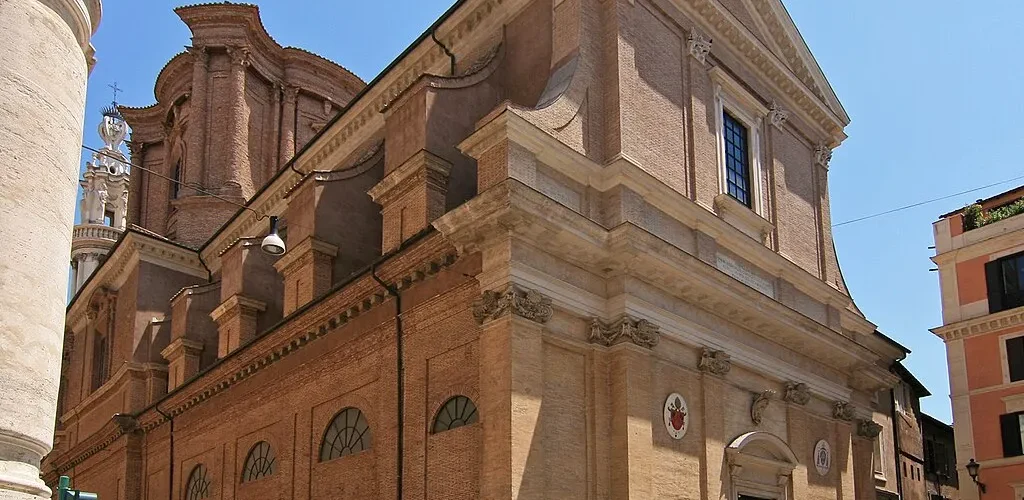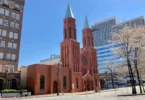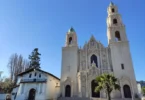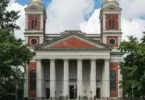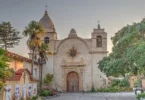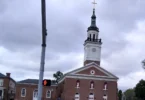Introduction
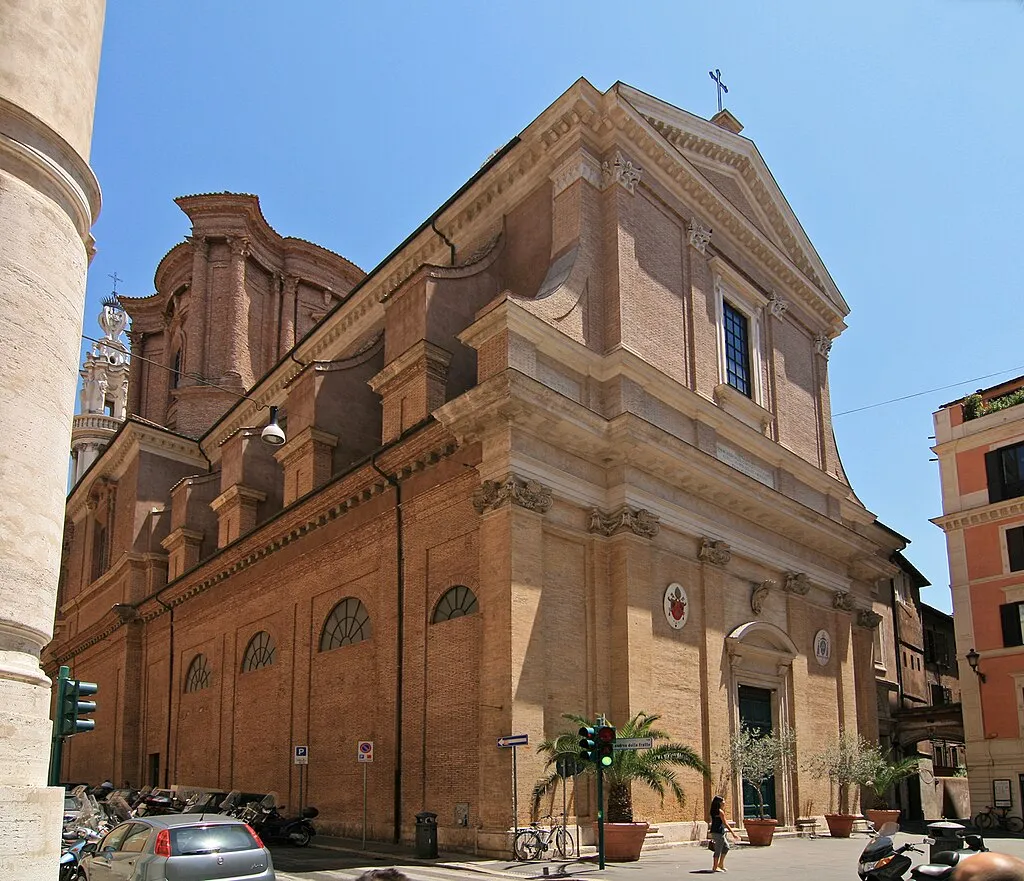
The Basilica of Sant’Andrea delle Fratte is a Catholic church located in the historic center of Rome, in the Colonna district. On April 25, 1942, Pope Pius XII elevated it to the status of a minor basilica. The church is a parish entrusted to the Order of Minims and is also a cardinal title. It is often referred to as the Sanctuary of the Madonna del Miracolo, as it is the site where Alphonse Marie Ratisbonne, a French lawyer of Jewish origin (later a priest), reportedly experienced a Marian apparition on January 20, 1842. This event, which the Catholic Church recognizes, led to Ratisbonne’s conversion to Catholicism.
Although the church’s origins date back to the 11th century, it was rebuilt in Baroque style between 1653 and 1658, according to a design by Francesco Borromini. The facade, however, was not completed until 1862. The church’s name comes from its location near Piazza di Spagna, which was once on the outskirts of the city, surrounded by trees and bushes.
On April 29, 1918, Maximilian Maria Kolbe, who had been ordained the day before, celebrated his first mass at this church.
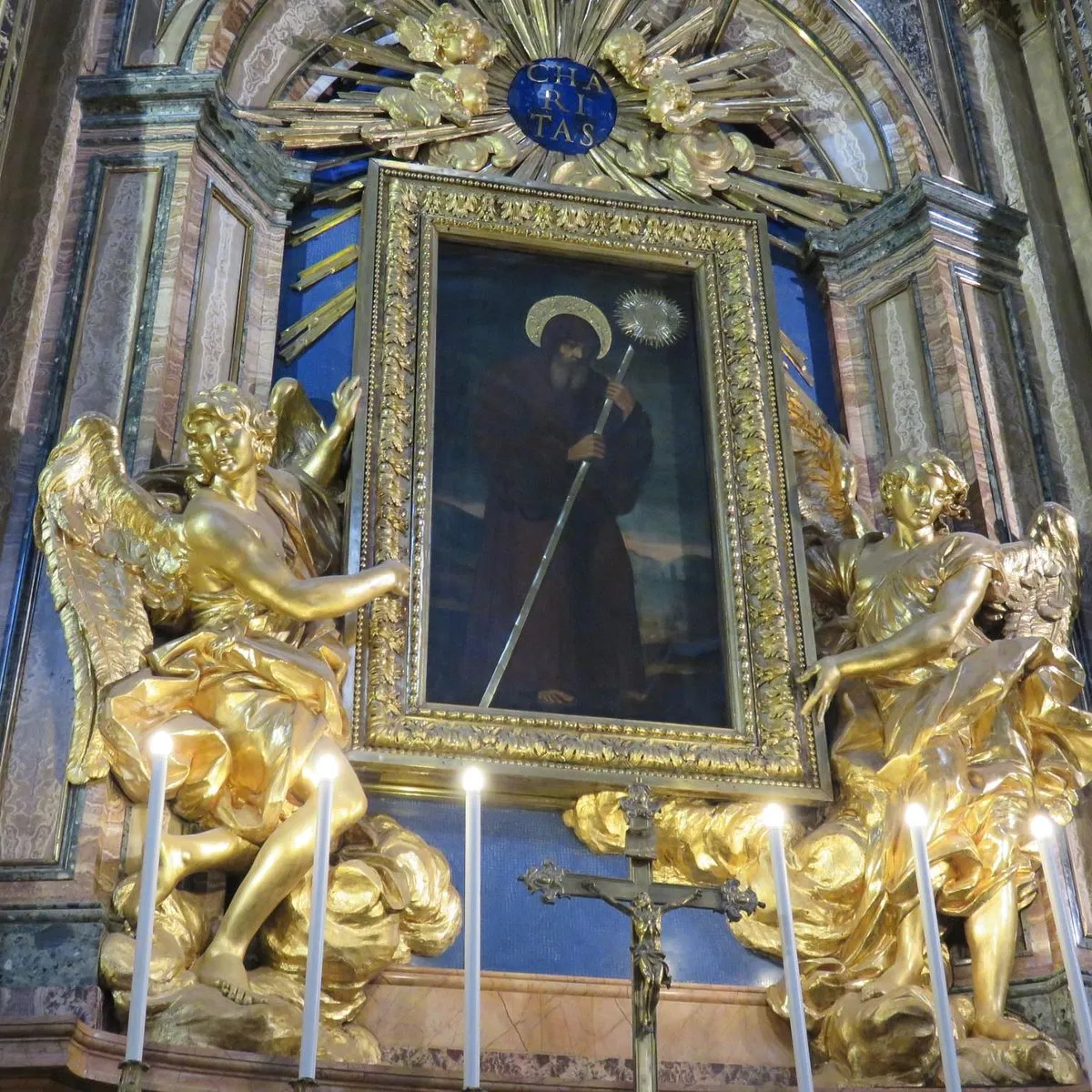
Early Origins and Construction
The site of the Basilica of Sant’Andrea delle Fratte was originally home to a church built in 1192, known as infra hortes (“amidst the orchards”). The name “fratte” (meaning “thickets”) is derived from this Latin term, which itself comes from the Byzantine Greek word φράκτη (phráktē), meaning “hedge.” The church was situated in a rural area at the northern edge of medieval Rome, far from the city’s urban center, which was still developing during that period. The original church was constructed for a community of Augustinian nuns, and it stood as a quiet place of worship amidst the surrounding countryside.
Changing Ownership and Role
Over time, the role of the church shifted. After Scotland became a Protestant country, the church, which had been the national church of the Scottish people in Rome, was reassigned by Pope Sixtus V in 1585 to the Minim friars of Saint Francis of Paola. The transition reflected broader changes in the religious landscape during the Reformation and its aftermath. In the same era, the nearby Scots College, a seminary for young men preparing for the priesthood, was located on Via del Tritone. However, in 1604, the college relocated to the Via delle Quattro Fontane.
Elevation to Minor Basilica
In recognition of its historical and religious significance, Pope Pius XII elevated the church to the status of a minor basilica on April 25, 1942, solidifying its place as an important site of Catholic worship in Rome.
Architecture of Basilica of Sant'Andrea delle Fratte, Rome, Italy
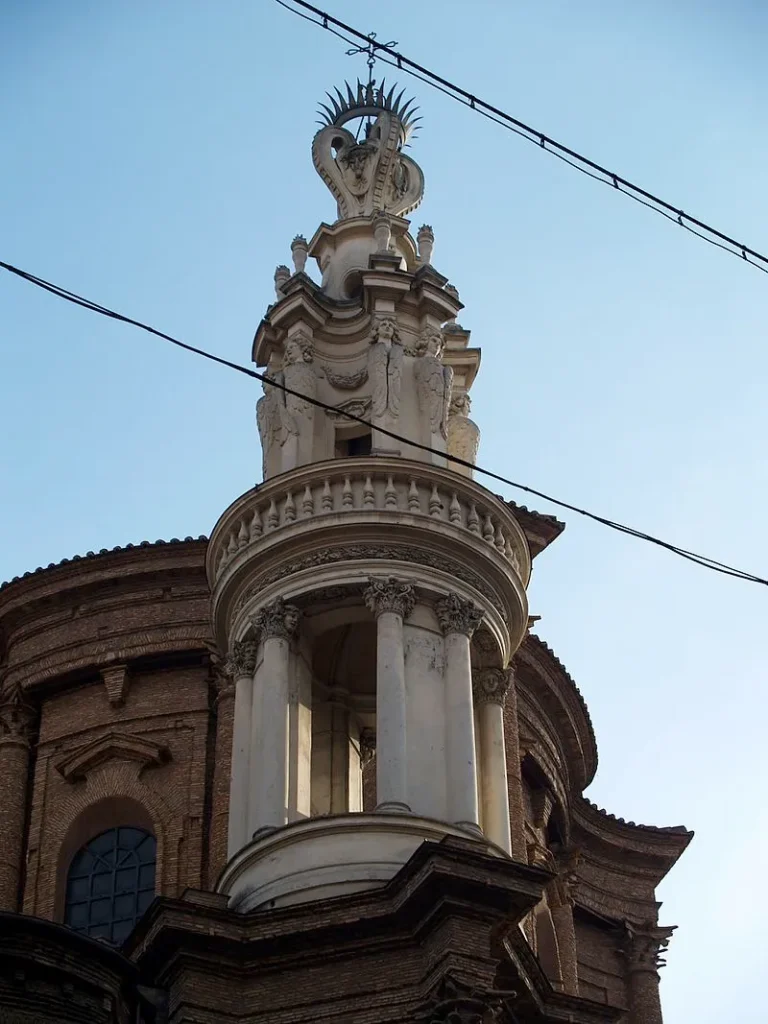
Architects: Francesco Borromini, Mattia de Rossi
Architectural Style: Baroque Architecture
External Features
Facade and Dome
The facade of the Basilica of Sant’Andrea delle Fratte was funded through a generous donation by Ercole Consalvi, the plenipotentiary of Pope Pius VII during the Congress of Vienna in 1826. The design and construction of the facade were entrusted to architect Pasquale Belli, who likely drew inspiration from Giuseppe Valadier. The facade follows the traditional layout of 16th-century Roman church facades, consisting of two superimposed orders. However, Belli’s design reflects a more restrained neoclassical style. He carefully avoided unnecessary decorative elements and projections, opting for a simplicity that conveyed refinement through the framing and detailing of the church. The approach presents a clear departure from earlier baroque exuberance, demonstrating a neoclassical refinement in its lines and proportions.
The cloister, which can be seen on the right side of the church, is decorated with a series of 17th-century frescoes that add another layer of historical artistry to the structure.
Bell Tower and Dome
The bell tower of the church was constructed by Francesco Borromini during the 17th century. The bell tower is designed with two orders, and its second order features distinctive capitals made up of herms of Janus Bifrons, a symbolic reference to duality and transitions. The dome of the church is particularly noteworthy for its structural reinforcement, with diagonal buttresses that give it the form of the Cross of Saint Andrew, the patron saint of the church. The contrast between the unfinished, rough brickwork of the dome and the well-maintained, white bell tower is visually striking, showcasing the tension between the ongoing construction of the church and its eventual completion.
Despite being incomplete, the design of the church has long been a subject of scholarly attention, with various architects and artists inspired by Borromini’s work. Filippo Juvarra, for example, was heavily influenced by the design of the church when creating the dome for the Basilica of Sant’Andrea in Mantua.
Internal Features
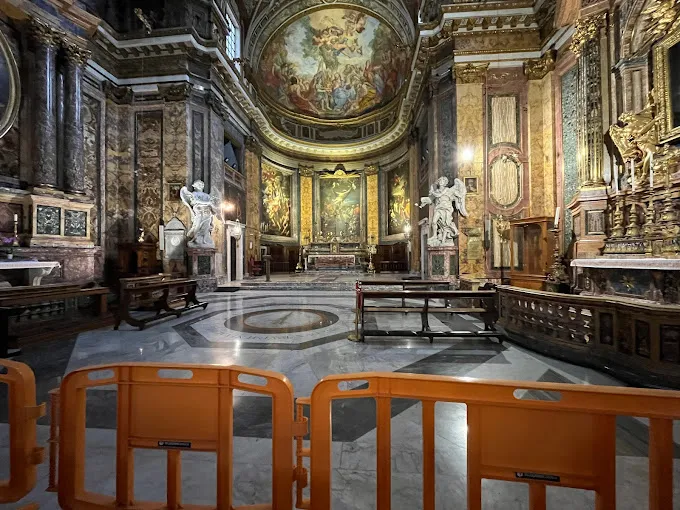
Layout and Design
The interior of the church is laid out in the shape of a Latin cross, with a transept and a deep apse that contribute to the grandeur of the space. The main nave is flanked by three chapels on each side, offering visitors a sense of depth and symmetry. The richly decorated interior features an array of artwork by 17th and 18th-century artists, including Francesco Cozza, Francesco Queirolo, Giovanni Battista Maini, Giuseppe Bottani, Paolo Posi, Pietro Bracci, and Andrea Pasqualino Marini from Recanati, among others.
Chapels
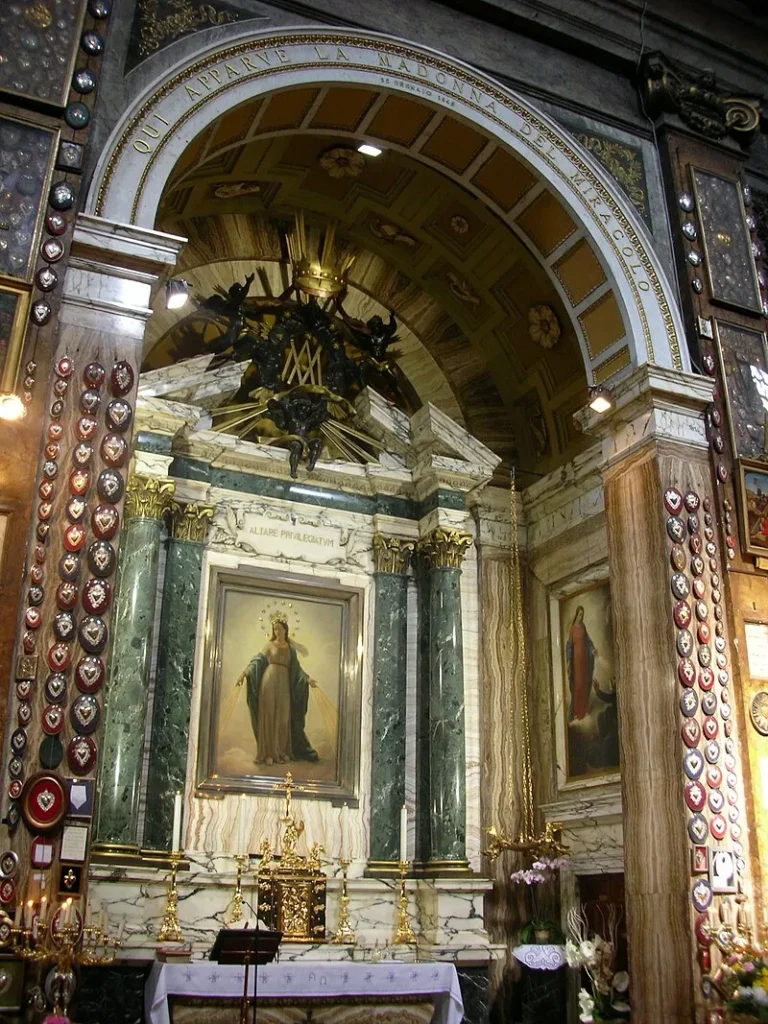
Accoramboni Chapel: The second chapel on the right, dedicated to the Accoramboni family, is a remarkable example of Baroque design. It is believed to be the work of Francesco Borromini, who possibly designed it to resemble the Spada Chapel of San Girolamo della Carità. The chapel is decorated with intricate marble features that emulate a temporary funeral arrangement, showcasing Borromini’s ability to blend architectural style with symbolic meaning.
Madonna del Miracolo Chapel: On the opposite side of the church, the chapel dedicated to the Madonna del Miracolo houses an altarpiece depicting the Madonna. This chapel is closely associated with the church’s title as the Sanctuary of the Madonna del Miracolo, recalling the famous Marian apparition experienced by Alphonse Marie Ratisbonne in 1842.
Transept Altars and Presbytery
In the transept, two altars stand out as remarkable works of art:
- The altar on the left was designed by Luigi Vanvitelli.
- The altar on the right was designed by Filippo Barigioni.
Both altars feature intricate carvings and paintings that enrich the church’s aesthetic and spiritual significance.
Presbytery and Paintings
The presbytery of the church houses several important paintings, including the “Martyrdom of Saint Andrew” by Lazzaro Baldi. This artwork is one of the most significant in the church, commemorating the patron saint’s death and elevating the spiritual atmosphere of the presbytery.
Statues by Gian Lorenzo Bernini
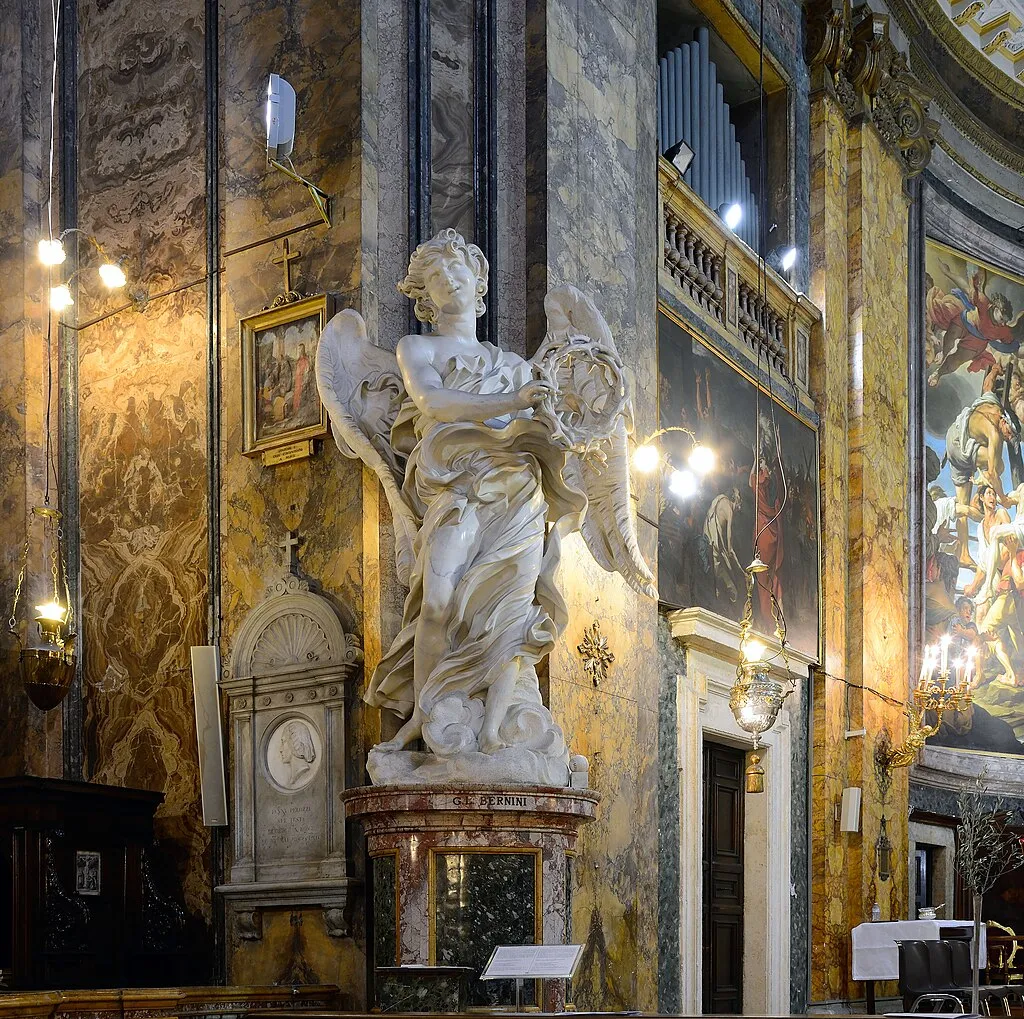
One of the most remarkable elements of the church’s interior is the pair of monumental statues of angels holding the symbols of the Passion, created by the legendary sculptor Gian Lorenzo Bernini. These statues were initially commissioned by Pope Clement IX for the Via Crucis series on Ponte Sant’Angelo. However, due to their exceptional beauty, they were considered too delicate for outdoor display. In 1729, after Bernini’s death, his heirs donated the statues to the church. These angels have since become iconic representations of the Baroque era and are often viewed as a comparison between the two great Baroque geniuses, Bernini and Borromini.
Crypt and Putridarium
Beneath the high altar and the presbytery area lies the crypt, which serves as the final resting place for several significant figures. Within this crypt is an unusual feature—Rome’s only example of a putridarium, a space used for the preservation of the deceased’s bodies before burial.
Pipe Organ
The church also houses an impressive pipe organ, built in 1933 by the Balbiani Vegezzi-Bossi company and later enlarged by the Continiello company. The organ, which is electrically operated, features 32 registers and a console equipped with three keyboards and a pedalboard. It is placed in two deep choirs that open onto the side walls of the presbytery, contributing to the church’s acoustics and enhancing the liturgical ceremonies with its rich sound.
Feast Day
Feast Day : 30th November
The feast day of the Basilica of Sant’Andrea delle Fratte is celebrated on November 30 each year, in honor of Saint Andrew, the patron saint of the church. Saint Andrew’s feast day, which is observed by the Catholic Church, commemorates the martyrdom of Saint Andrew, one of the twelve apostles of Jesus. Since the basilica is dedicated to Saint Andrew, this day holds particular significance for the church.
Church Mass Timing
Monday : 8.00 AM, 10.00 AM, 12.00 PM and 6.00 PM
Tuesday : 8.00 AM, 10.00 AM, 12.00 PM and 6.00 PM
Wednesday : 8.00 AM, 10.00 AM, 12.00 PM and 6.00 PM
Thursday : 8.00 AM, 10.00 AM, 12.00 PM and 6.00 PM
Friday : 8.00 AM, 10.00 AM, 12.00 PM and 6.00 PM
Saturday : 8.00 AM, 10.00 AM, 12.00 PM and 6.00 PM
Sunday : 8.00 AM, 10.00 AM, 12.00 PM, 5.30 PM and 7.00 PM
Church Opening Time:
Monday : 7:30 am – 1:00 pm, 4:00 pm – 7:00 pm
Tuesday : 7:30 am – 1:00 pm, 4:00 pm – 7:00 pm
Wednesday : 7:30 am – 1:00 pm, 4:00 pm – 7:00 pm
Thursday : 7:30 am – 1:00 pm, 4:00 pm – 7:30 pm
Friday : 7:30 am – 1:00 pm, 4:00 pm – 7:00 pm
Saturday : 7:30 am – 1:00 pm, 4:00 pm – 7:00 pm
Sunday : 7:30 am – 1:00 pm, 4:00 pm – 8:00 pm
Contact Info
Address :
Via di Sant’Andrea delle Fratte, 1, 00187 Roma RM, Italy.
Phone : +39066793191
Accommodations
Connectivities
Airway
Rome Airport (FCO) to Basilica of Sant’Andrea delle Fratte, Rome, Italy distance between 38 min (31.7 km) via A91.
Railway
Flaminio to Basilica of Sant’Andrea delle Fratte, Rome, Italy distance between 13 min (4.4 km) via Lungotevere dei Mellini.

